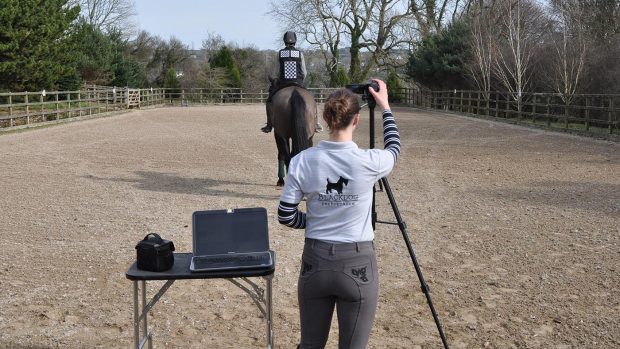Stringhalt
Stringhalt is a poorly understood neuromuscular disorder in which the nerves to the muscles are afflicted. It results in a mild to severe “hyperflexion” (extreme flexing upwards) of one or both hocks. This is shown as a sudden jerking up of the limb, either occasionally or with every step, sometimes such that the hoof strikes the horse’s belly. It is most obvious at walk, on turning or on backing up.
Despite its “violent” image, most horses remain remarkably unconcerned. The cause of the nerve degeneration is unknown but may be a result of trauma. An Australian version of stringhalt has been linked to the ingestion of plant toxins from poor quality pasture.
If the condition is mild, horses can cope. But the surgical cutting of the “lateral digital extensor muscle”, reducing the “snatching up” action, may be considered in severe cases.
Shivering
Like stringhalt, but less common, this is an ill-defined neuromuscular disease. It may be dietary in origin, or may be a complication of a viral or bacterial infection.
It is characterised by an involuntary elevation of a hindleg — and often the tail as well — which then quivers and shakes, before returning back down. Occasionally there may be fine body tremors too. The signs, which can vary from day to day, are worse when backing or going downhill.
Shivering tends to become progressively worse, and there is no treatment, although some control of early cases can be achieved with a high fat and low carbohydrate diet.
Fibrotic myopathy
In this condition there is a sudden “slapping down and back” of the hindlimb during its forward movement, shortening the movement. It is most obvious at walk and is often confused with stringhalt, although careful observation shows there is no hyperflexion.
It is usually caused by a traumatic injury to any of several hindlimb muscles, classically during sudden “stop and turn” type exercises, experienced by polo ponies or Quarter Horses. This muscle tearing results in areas of fibrosis, and even ossification, within the damaged muscle, which also eventually begins to reduce in size. Ultimately muscle function will become compromised. In some cases, the hard, knotted areas can be felt on the backs of the hindquarters.
Physiotherapy to stretch the damaged muscles helps many horses with fibrotic myopathy. But in severe cases surgery may be required to loosen, or even remove, the knotted muscle mass — or to transect it at its bony attachment.
Upward fixation of the patella
This occurs when the patella (or kneecap) becomes locked over the outside of the “trochlear ridge” of the thighbone within the stifle, causing the characteristic rigid extension of the stifle and hock. The leg remains like this until the hindlimb muscles are able to lift the patella off the trochlear ridge, so allowing the stifle to flex once more.
It is usually seen in younger animals in poor condition, especially those with straight hindlimb conformation, or those who are off work and are unmuscled.
The condition can affect one or both hindlimbs, can be intermittent or permanent, and can vary from mild (where an occasional “clicking” is heard, or a slightly “jerky” action noticed) to severe, where the stifle becomes stuck in extension for distressingly long periods.
Treatment is aimed at improving and maintaining the animal’s condition and level of fitness. The injection of irritants into the patella ligaments, or shoeing with raised heels, has also been tried. Surgery to cut the inside patella ligament is only now used as a last resort because of its known association with subsequent patella fractures or degeneration.
To read more about gait abnormalities and lameness visit the HHO horsecare archive at www.horseandhound.co.uk/horsecare/



